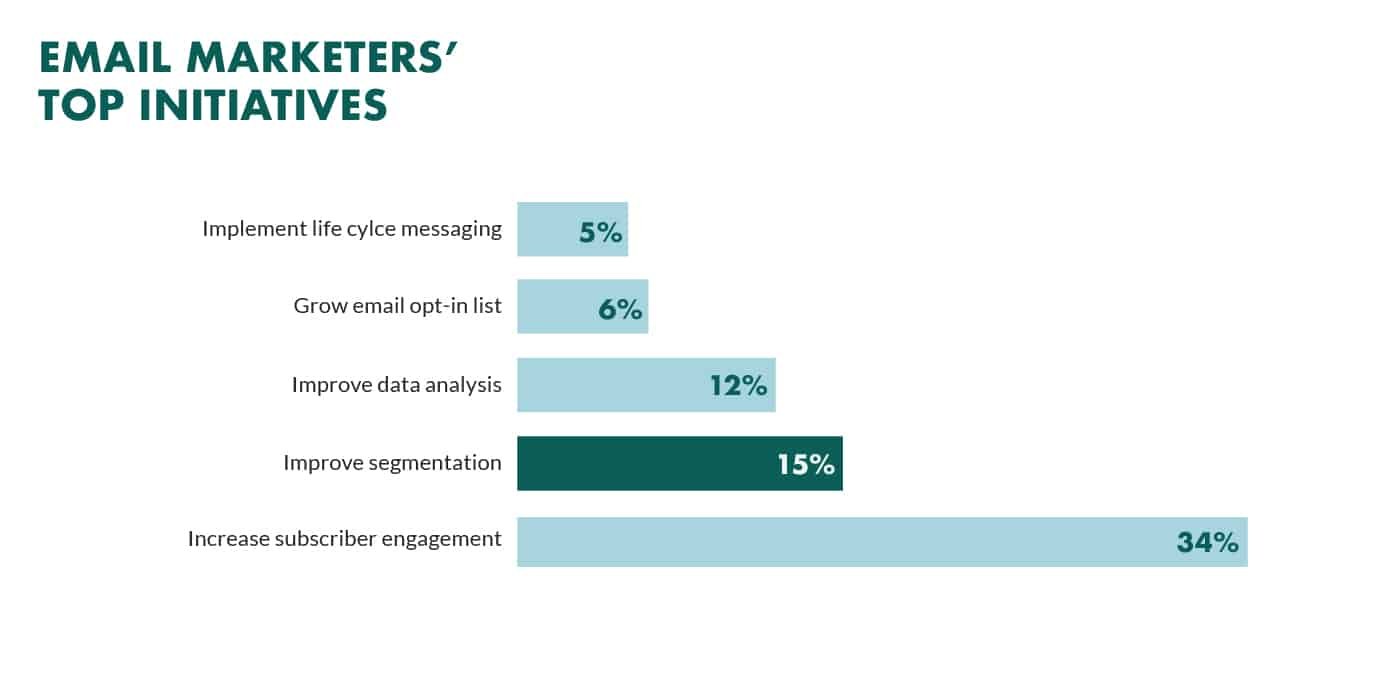Email marketing remains a powerful tool. It connects businesses with their audience directly.
Yet, many struggle to use it effectively. In this blog post, we will explore the top email marketing strategies. These strategies can help your business grow and engage your audience better. Email marketing isn’t just about sending emails. It’s about sending the right emails to the right people at the right time.
With the right strategies, you can improve open rates, click-through rates, and conversions. Whether you’re a small business or a large corporation, these strategies can make a big difference. Ready to take your email marketing to the next level? Let’s dive in and discover how you can optimize your email campaigns for success.

Table of Contents
Building A Quality Email List
Building a quality email list is crucial for effective email marketing. A good list ensures your emails reach the right audience. This helps increase open rates and conversions. Below are key strategies to build a quality email list.
Opt-in Forms
Opt-in forms are vital for growing your email list. They allow users to voluntarily subscribe to your emails. This ensures that your subscribers are genuinely interested in your content.
Here are some tips for creating effective opt-in forms:
- Place opt-in forms on high-traffic pages like the homepage and blog posts.
- Use a clear and compelling call-to-action (CTA).
- Keep the form simple, asking only for essential information like name and email.
- Offer incentives for signing up, such as discounts or exclusive content.
| Opt-in Form Placement | Benefits |
|---|---|
| Homepage | High visibility, captures general interest |
| Blog Posts | Engages readers already interested in content |
| Pop-ups | Grabs attention, can be timed for effectiveness |
Lead Magnets
Lead magnets are valuable resources given in exchange for an email address. They attract potential subscribers by offering something useful.
Common types of lead magnets include:
- Ebooks: Comprehensive guides on relevant topics.
- Checklists: Simple, actionable steps on a particular subject.
- Templates: Ready-to-use documents or designs.
- Webinars: Live or recorded sessions on important issues.
To create effective lead magnets:
- Ensure they are relevant to your target audience.
- Make them easy to access and use.
- Promote them on multiple channels like social media and your website.
By using opt-in forms and lead magnets, you can build a quality email list. This forms the foundation for successful email marketing campaigns.
Crafting Engaging Subject Lines
Crafting engaging subject lines is a crucial aspect of email marketing strategies. A compelling subject line can significantly increase your email open rates. It serves as the first impression, enticing recipients to open your email. In this section, we will explore two key techniques: Personalization Techniques and A/B Testing.
Personalization Techniques
Personalization can make your subject lines more appealing. Using the recipient’s name or other personal details makes the email feel tailored. For example:
- Include the recipient’s name: “John, don’t miss out on our new offers!”
- Refer to past purchases: “Anna, we have recommendations for you.”
- Use location details: “Exclusive deals for our New York customers!”
Personalization can make recipients feel valued. It also increases the chances of your email being opened. The key is to make it relevant and specific.
A/b Testing
A/B testing involves creating two versions of a subject line. Each version is sent to a small group of recipients. The version with the higher open rate is then sent to the rest of your list. Here is how you can do it:
- Create two different subject lines.
- Send each version to a small segment of your list.
- Analyze the open rates for both versions.
- Send the winning subject line to the rest of your recipients.
A/B testing helps identify what resonates with your audience. It is a data-driven approach to improving your email marketing strategy.
| Subject Line Version | Open Rate |
|---|---|
| Version A: “Special Offer Just for You” | 20% |
| Version B: “Exclusive Deal Awaits!” | 25% |
In this example, Version B has a higher open rate. So, it should be used for the remaining recipients.
Remember, effective subject lines are the gateway to higher engagement. Use these techniques to craft compelling and engaging subject lines.
Designing Compelling Email Content
Creating engaging email content is key to successful email marketing. It’s not just about the text. It’s about how you present it. Great email content captures the reader’s attention and drives them to act. Let’s explore some strategies.
Visual Elements
Visual elements make your emails appealing. Use images, colors, and fonts effectively.
- Images: High-quality images grab attention. They should be relevant to your message.
- Colors: Use brand colors. They make your emails recognizable.
- Fonts: Use readable fonts. Avoid too many font types.
Combine these elements to create a visually appealing email. It keeps readers interested.
Storytelling
Storytelling makes your email content relatable. It connects with readers on a personal level.
- Start with a hook: Open with a catchy line. This grabs attention.
- Build a narrative: Use a simple story. Make it relevant to your message.
- End with a call to action: Encourage readers to take the next step.
Stories create an emotional connection. They make your message memorable.
Here is a quick summary of these strategies:
| Strategy | Description |
|---|---|
| Visual Elements | Use images, colors, and fonts to make emails appealing. |
| Storytelling | Use relatable stories to connect with readers. |
Designing compelling email content is essential for engagement. Use these strategies to make your emails stand out.
.webp?width=543&height=362&name=Copy%20of%20Linkedin%20-%201104x736%20-%20Horizontal%20Bar%20Graph%20-%20Light%20(3).webp)
Segmenting Your Audience
Effective email marketing requires understanding your audience. Segmenting your audience ensures your message is relevant. When emails target specific groups, they become more engaging. There are several ways to segment your audience. Let’s explore two effective methods: Behavioral Segmentation and Demographic Segmentation.
Behavioral Segmentation
Behavioral segmentation divides your audience based on their actions. This approach focuses on user behavior. It looks at how customers interact with your brand. Here are some key behaviors to consider:
- Purchase History: Identify what products they bought. Tailor your emails to suggest similar items.
- Email Engagement: Track who opens your emails. Send follow-ups to those who engage.
- Website Activity: Monitor the pages they visit. Offer content related to their interests.
- Time of Engagement: Note when they are most active. Schedule emails for peak times.
Segmenting by behavior helps create personalized experiences. Customers feel valued when emails address their needs.
Demographic Segmentation
Demographic segmentation is another powerful strategy. It divides your audience by personal attributes. These attributes include:
- Age: Different age groups have different interests. Tailor your content to suit their preferences.
- Gender: Men and women might prefer different products. Customize your promotions accordingly.
- Location: Geographic location affects buying habits. Offer region-specific deals or events.
- Income Level: Income influences spending power. Suggest products within their budget.
Understanding demographics helps in crafting targeted messages. It ensures your content is relevant to each group.
Both behavioral and demographic segmentation are key strategies. They make your email marketing more effective. They help deliver the right message to the right people. This increases engagement and boosts conversions.
Automating Your Campaigns
Email marketing can be time-consuming. Automating your campaigns can save time and increase efficiency. Automation helps you send personalized emails without manual effort. It ensures your audience gets the right message at the right time.
Drip Campaigns
Drip campaigns are a series of pre-written emails sent over time. They nurture leads and guide them through the sales funnel. Drip campaigns can be tailored to the user’s actions or behavior.
Here is an example of a simple drip campaign:
| Day | Email Content |
|---|---|
| 1 | Welcome Email |
| 3 | Introduction to Products/Services |
| 7 | Customer Testimonials |
| 14 | Special Offer |
Triggered Emails
Triggered emails are sent based on specific user actions. They are highly relevant and timely. Triggered emails can include welcome messages, cart abandonment reminders, and re-engagement emails.
Consider these types of triggered emails:
- Welcome email when a user signs up
- Reminder email when a user leaves items in the cart
- Re-engagement email when a user is inactive
Using triggered emails can improve user engagement. They show your users you care about their actions and needs.

Analyzing Campaign Performance
Analyzing your email campaign performance is crucial for success. It helps you understand what works and what doesn’t.
This section focuses on key metrics to measure your campaign’s effectiveness.
Open Rates
Open rates show how many people opened your email. This metric indicates the effectiveness of your subject line and sender name.
A high open rate suggests that your email grabbed attention.
To improve open rates, you can:
- Craft compelling subject lines.
- Personalize your emails.
- Send emails at optimal times.
Click-through Rates
Click-through rates (CTR) measure how many people clicked on links in your email.
This metric shows how engaging your content is.
A high CTR means your audience finds your content valuable.
To boost CTR, consider these tips:
- Include clear and strong call-to-actions (CTAs).
- Make your email visually appealing.
- Segment your audience for targeted content.
By focusing on open rates and click-through rates, you can optimize your email marketing strategies.
Ensuring Deliverability
Email marketing is a powerful tool. But ensuring your emails reach the inbox is crucial. Deliverability is the key to successful email campaigns. Below are some strategies to ensure your emails make it to the inbox.
Avoiding Spam Filters
Spam filters are the gatekeepers of the inbox. To avoid them, follow these steps:
- Use a recognizable sender name: People are more likely to open emails from familiar sources.
- Write clear and relevant subject lines: Avoid spammy words like “free” or “guarantee”.
- Balance text and images: Emails with too many images might be flagged as spam.
- Include a clear unsubscribe link: This shows that you respect the recipient’s choice.
- Test your emails: Use tools to check if your email will be marked as spam.
Maintaining Clean Lists
A clean email list ensures better deliverability. Here’s how you can maintain it:
- Regularly remove inactive subscribers: They can harm your sender reputation.
- Use double opt-in: This ensures only interested people join your list.
- Segment your list: Send relevant content to each segment to keep engagement high.
- Monitor bounce rates: High bounce rates can affect your deliverability.
- Validate email addresses: Use tools to ensure the addresses are valid before adding them to your list.
By following these strategies, you can improve your email deliverability. This ensures your message reaches your audience effectively.
Incorporating Interactive Elements
Email marketing is evolving. Static content no longer grabs attention. Interactive elements engage readers and boost results. Adding interactive elements to your emails makes them more engaging. This can lead to higher open rates and conversions. Let’s explore some top strategies.
Surveys And Polls
Surveys and polls are great interactive elements. They encourage reader participation. Simple questions can provide valuable feedback. Ask about preferences, interests, or opinions. Use this data to tailor future emails.
Consider embedding a quick poll. For example:
| Question | Options |
|---|---|
| What type of content do you prefer? |
|
This makes your email interactive and informative. It also shows readers that their opinion matters.
Dynamic Content
Dynamic content changes based on user data. It personalizes the email experience. Use dynamic content to show personalized offers. Tailor product recommendations based on past behavior. This increases relevance and engagement.
For example:
- Address the reader by name.
- Show products they viewed recently.
- Include personalized discount codes.
Dynamic content makes readers feel valued. It can drive higher click-through rates and conversions.
Incorporating these interactive elements can make your emails stand out. They engage readers and provide a personalized experience. Start using surveys, polls, and dynamic content in your email marketing strategy.
Frequently Asked Questions
What Are The Best Email Marketing Strategies?
Effective email marketing strategies include personalization, segmentation, automation, and A/B testing. Focus on creating engaging content and optimizing send times. Use analytics to track performance.
How Can I Improve Email Open Rates?
To improve open rates, craft compelling subject lines. Personalize emails and segment your audience. Test different send times and analyze the results.
Why Is Email Segmentation Important?
Email segmentation allows you to send targeted content to specific groups. It increases engagement and conversion rates. Tailor messages to match audience preferences.
What Is Email Automation?
Email automation involves using software to send emails automatically based on specific triggers. It saves time and ensures timely communication with subscribers. It improves engagement.
Conclusion
Implementing these email marketing strategies can transform your campaigns. Focus on clear, concise messages. Personalize your emails to connect with your audience. Use compelling subject lines to increase open rates. Monitor your results and adjust accordingly. Consistency is key. Building strong relationships with your subscribers takes time.
But with dedication, your efforts will pay off. Email marketing remains a powerful tool. Leverage these tips to see real results. Happy emailing!



Leave a Reply